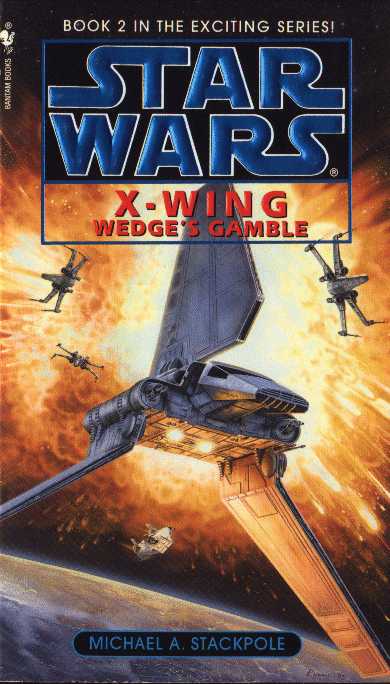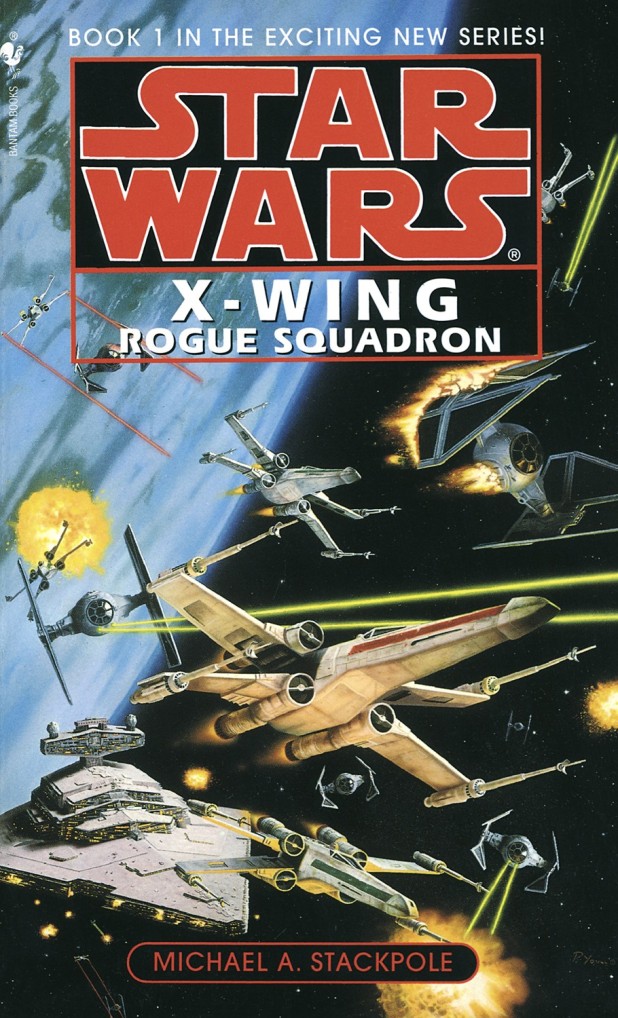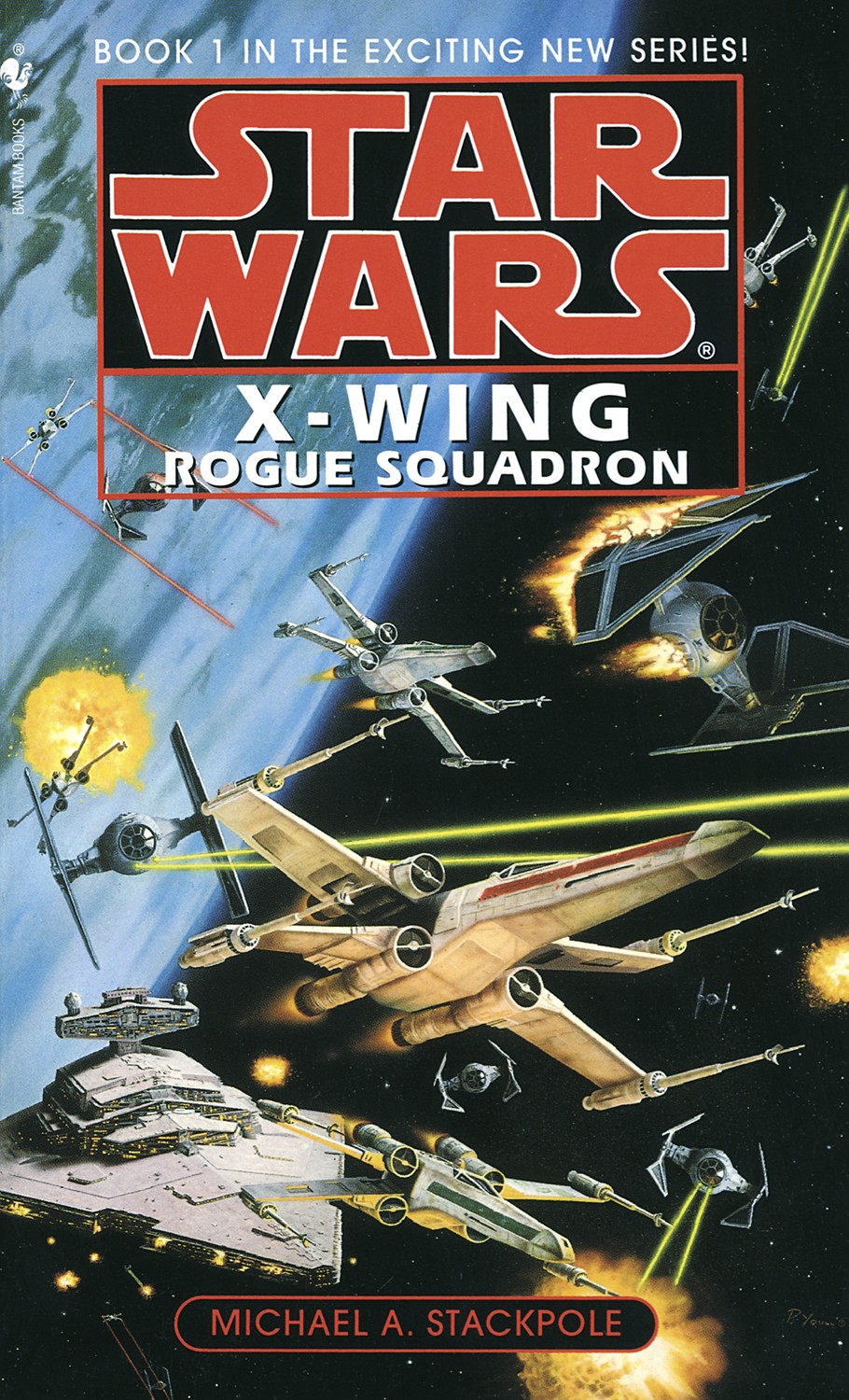Welcome back to our re-read of the Star Wars Expanded Universe! It’s been a few months, largely because I’ve given some of my time over to reading other things in the course of my 52-book challenge for the year (see the end of this post for more on that). Nevertheless, it’s good to be back! Today we’re moving on with the X-Wing series with book two, Wedge’s Gamble.
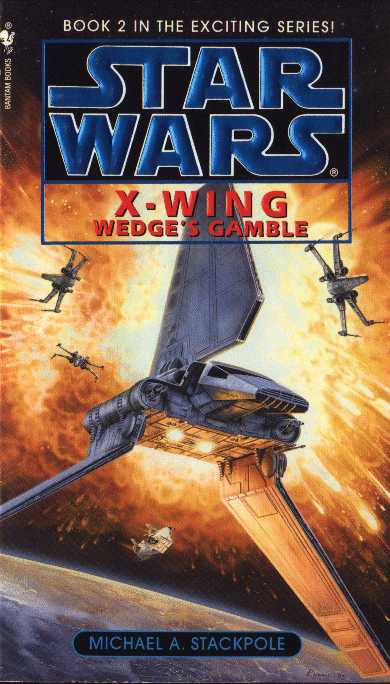
Quick recap: The Expanded Universe, or EU, is that collection of Star Wars materials written before Disney’s acquisition of Lucasfilm (and thus Star Wars) in 2012. Disney proceeded to produce its own materials, including films and books (and possibly comics—I haven’t tracked it) that take place in a separate continuity from the EU, and deviate significantly from the older materials. The two canons share a few items, namely the original and prequel trilogies and the Clone Wars television series. As well, Disney-owned Lucasfilm has made a practice of cherry-picking characters, events, and other items from the EU for their own purposes, but never full stories thus far. Disney also rebranded the EU as “Star Wars Legends” so that it can keep selling reprints without interfering with its own canon stories; personally, I prefer the term “Expanded Universe” or EU, and will typically use it here (though I may occasionally use “Legends” for clarification).
I prefer the EU materials over the new canon stories, though I can’t say that I hate the new materials. I’ve seen the four new movies that have been released (The Force Awakens, The Last Jedi, Rogue One, and Solo), and they’re…tolerable, I would say. Not fantastic (except Rogue One—well done on that one!), but decent—they feel more like high-quality Star Wars fanfiction to me (and I’ve written some Star Wars fanfiction in my life, so take that as a compliment). It’s the EU, though, that was part of my life and my teen years, and I’ll always have a love for it. With that in mind, I started this re-read of the EU novels in the post-Return of the Jedi era, beginning with The Truce at Bakura, and hopefully, eventually, ending with Crucible, the final EU novel. I’ve excluded a few items, notably children’s novels such as the Jedi Prince series; however, I’ve retained the Young Jedi Knights series, as it’s written for a somewhat older audience, and is important for events in some of the adult novels. Here is the timeline we’re using. I read many of these novels in my teen years and my twenties; but many of them, I did not, as I was never able to obtain them in the days before ebooks became common. Today’s entry, along with the rest of its series, is like that.
There will be spoilers ahead! These books have existed long enough that I feel justified in speaking frankly about plot details, so if that’s not your thing, this is your chance to bow out. No hard feelings if so! I love you all anyway, and we’ll see you again when we take up a different topic. And so, with that said, let’s get started!
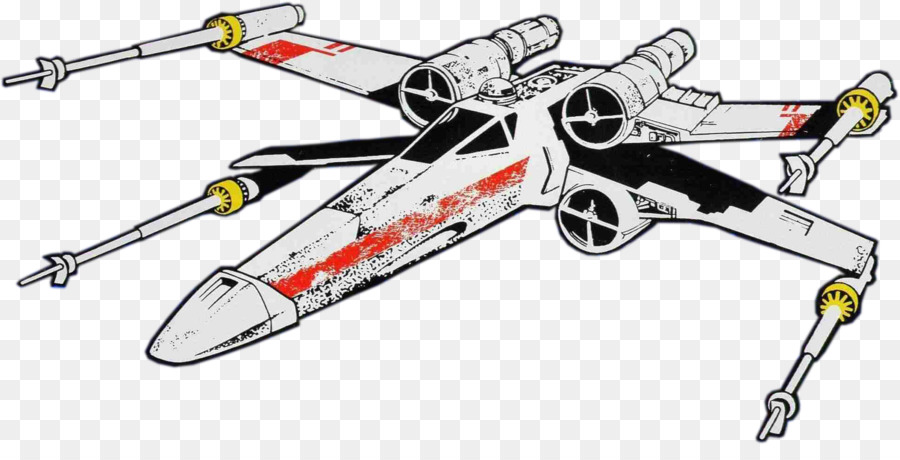
Image courtesy of Kissclipart
X-Wing 1: Rogue Squadron had a lot of ground to cover. It gave us the story of the reconstruction of the fabled Rogue Squadron of X-Wing pilots in the post-Return of the Jedi era. Commander Wedge Antilles reassembles the squadron with the best pilots he can find, including future Jedi (sorry, spoiler, but a very well-known one) Corran Horn, formerly of Correlian Security, or CorSec. Corran is our chief protagonist here, though this is definitely an ensemble cast. The newly-formed squadron is then tasked with taking the planet Borleias, held by Imperial General Evir Derricote. Borleias will serve as a staging ground for a Rebel conquest of the galactic capital: Coruscant, also known as Imperial Center. Along the way, a third of the Rogues’ pilots die; even with replacements, they’ll still be down two pilot throughout the second book. (I will be trying to keep track of the deaths and replacements. So far we’ve lost Bothan male Peshk Vri’syck, Rodian female Andoorni Hui, Kessel human female Lujayne Forge, and Thyferran human male Bror Jace. Replacements include Contruum human male Pash Cracken, and Sullustan female Aril Nunb, who was sidelined in the first book and is now called up for active duty.)
Wedge’s Gamble hits the ground running, with the Rogues having barely a moment to breathe. They are rerouted from Borleias back to their previous base at Noquivzor, but it doesn’t last long. Wedge finds that the plan to take Coruscant has been accelerated; and it means a rare and difficult infiltration mission for the Rogues. They will be inserted into Coruscant in small groups, under assumed identities, with the express mission of exposing the planet’s weaknesses—and possibly preparing it for invasion.
Coruscant is no easy target. It’s easily the most heavily-defended planet in the Empire; for after all, whoever holds Coruscant will likely be seen as the legitimate ruler of the galaxy. As such, the planet has two concentric planetary shields, with many redundant systems for command, control, and power; in addition the planet has numerous Golan Defense platforms in orbit, as well as a standing complement of Star Destroyers and other ships. Cracking this nut will not be simple. However, the Rebels are unaware that Imperial Intelligence Director Ysanne Isard—acting regent of the Empire—wants them to take the planet. She tasks Evir Derricote and Kirtan Loor with creating a virus, the Krytos virus, which will infect the planet’s many non-humans with a deadly plague, thus burdening the Rebels with their care once they take the planet. Simple enough, eh? But there’s more. The plague can be easily cured with bacta—but doing so will take quantities of bacta that the Rebellion can’t afford. If they provide treatment, they’ll be bankrupt—but if they withhold it, they’ll be seen as monsters on the scale of the Empire itself. Either way, the strain will tear the rebellion apart.
Complicating things is a plan by the Bothans, which involves rescuing prisoners from Kessel and inserting them into Coruscant as well. This will revive the dying remnants of the Black Sun criminal organization, thus giving the Empire another thorn in its side—but also giving the Rebellion ready-made traitors in its midst. And Rogue Squadron already has one traitor…
The plan begins, and the Rogues are inserted into Coruscant’s underworld. However, things quickly go wrong, as their moves are reported to the Empire. First plans and backup plans alike come crashing down. Then, things are further complicated by an attack on Noquivzor by Imperial warlord Zsinj, whose fleet stands in opposition to both the Rebels and Isard. Tycho Celchu is allegedly killed in the attack—but Corran Horn is certain that Tycho is on Coruscant, and is the traitor in their midst. Unable to fight both Zsinj and Isard, the Rebellion is forced to speed up the attack on Coruscant. This interferes with Isard’s plan to deploy the virus (although she manages to make an abbreviated deployment), but also puts pressure on the Rogues. Against all odds, they are able to take down the planetary shields just seconds before the Rebel fleet jumps into the system; but in the process, Corran Horn is lost and presumed dead. In reality, he has been captured by isard, and taken to the infamous Lusankya prison—where no one escapes unless Isard wants them to, and everyone who does is an Imperial sleeper agent. Meanwhile, Tycho is arrested on suspicion of engineering Corran’s death.
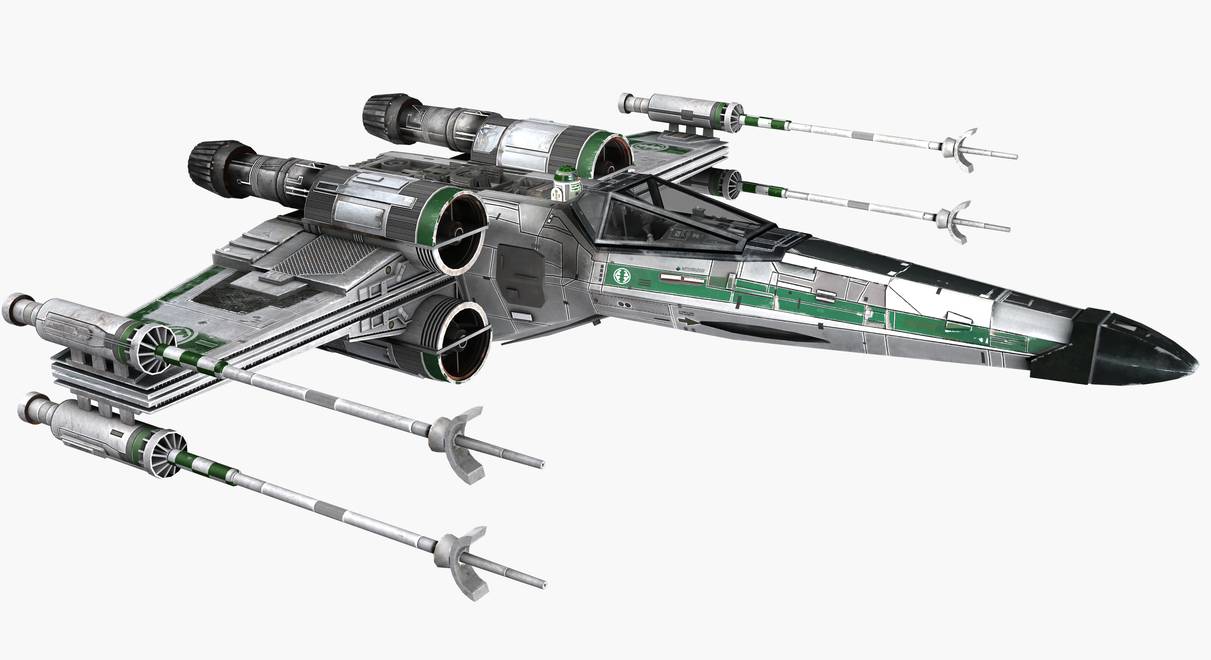
Corran Horn’s CorSec X-Wing. Image by Lorcan13 at DeviantArt.
While the first book was largely groundwork for the series, that phase is over now. We’re all action here; most of our characters are established, and we get to see them at work. Some expansion is necessary, of course; notably, we see the beginnings of Corran’s long relationship (and eventual marriage) with smuggler Mirax Terrik. A few new characters arrive, including Inyri Forge, the younger sister of deceased pilot Lujayne Forge. Inyri joins us as a villain of sorts, attached to Black Sun notable Zekka Thyne; however, she makes a conversion over to the Rogues’ side by the end of the book. Her change in allegiances feels a little sudden, but inevitable; but I’m not going to complain too much, as she’s quite a sympathetic character. (Or maybe I’m just honoring her sister’s memory—Lujayne’s death in the first novel was a hard blow to overcome.)
Speaking of deaths: Stackpole goes easy on us this time, after the four deaths of the first novel. No one in Rogue Squadron actually dies here, although Bror Jace’s death at the end of the first novel is almost fresh enough to count. (More on that in a later book, though…) Corran Horn is presumed dead, but it’s made obvious to the audience that he isn’t. Instead, he’s last seen en route to Lusankya, Isard’s infamous prison where she converts prisoners into sleeper agents. This seems to be a setup for some excellent drama later, as the book plays up Corran’s growing suspicion of Tycho Celchu, who is a former prisoner of Lusankya. Although I knew about Tycho’s imprisonment, I had somehow forgotten that Corran also serves time there, so I’m interested to see how it plays out.
I spoke last time about what I call “stock plus one” villains. That is, the early EU is filled with villains who would be generic (stock) villains, except for one exceptional characteristic that sets them apart. Here the focus is again on Intelligence agent Kirtan Loor, Corran’s old nemesis from his CorSec days (or one of them—he has several). Last time I suggested that his “plus one” was his eidetic memory; here, he’s changed a bit, and we begin to see that his “plus one” is his relationship to the concept of fear. It rules his life—but, he’s growing out of that! By the end of the book, he’s mastered his fear, and is poised to become someone quite influential. Isard, seeing this, places him in charge of a counter-insurgency movement she plans to leave behind her when she evacuates to Lusankya. I’m very interested to see where this goes.
Overall: This is a fast-moving, rocking-and-rolling story. It covers months of time, but no one would know it, judging by the pace of events. Stackpole is clearly at home in this kind of story; he loves the militaristic arm of the Rebellion, and he does well with it. His attention to detail shines in several places, from the complexity of his characters’ plans all the way down to his description of the control mechanisms of a speeder bike. Moreover, this is our first good look in the EU at post-Jedi Coruscant, which will be a major site throughout everything still to come. Great things have happened, and greater things lie ahead.
Next time: We pick up the pieces of an ailing world in book three, The Krytos Trap! See you there.
X-Wing: Wedge’s Gamble is available from Amazon and other booksellers.
You can find Wookieepedia’s treatment of the novel here.

